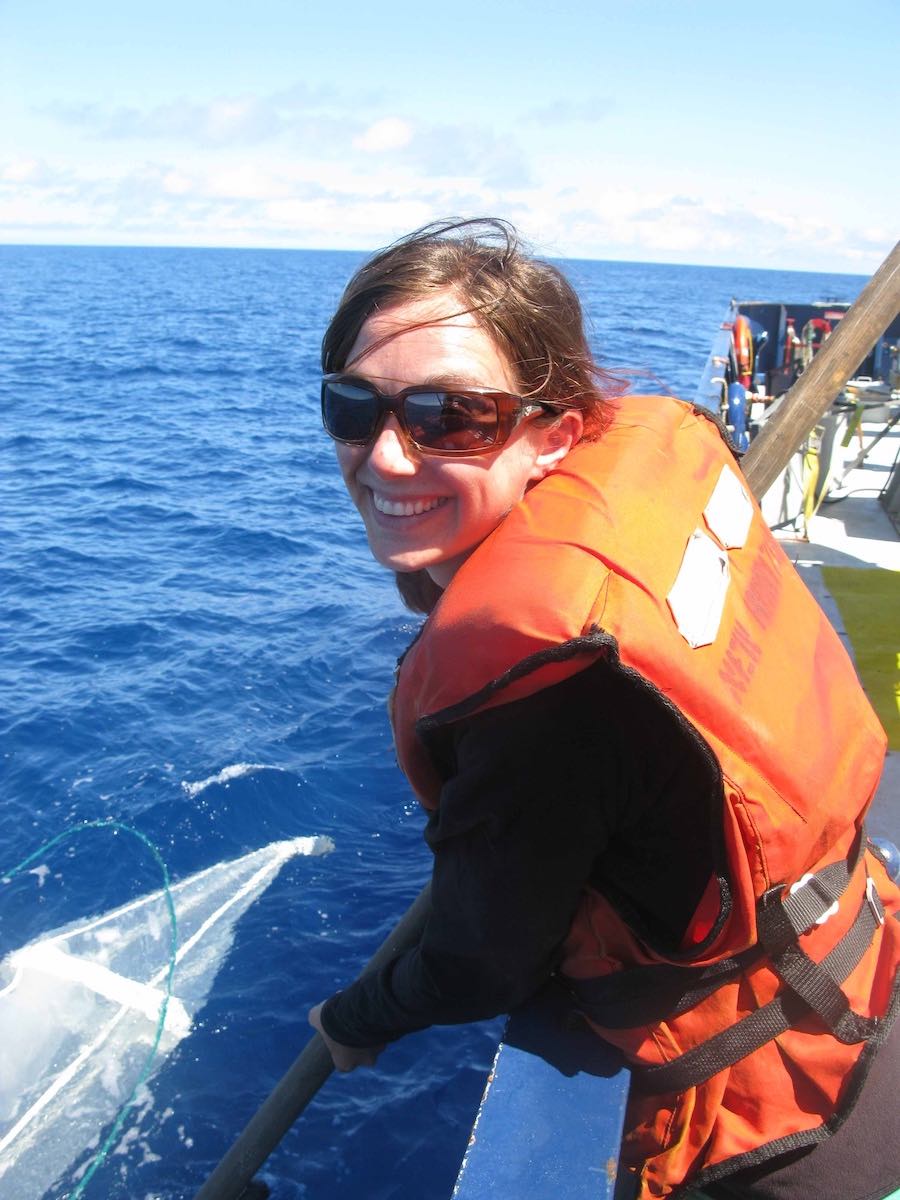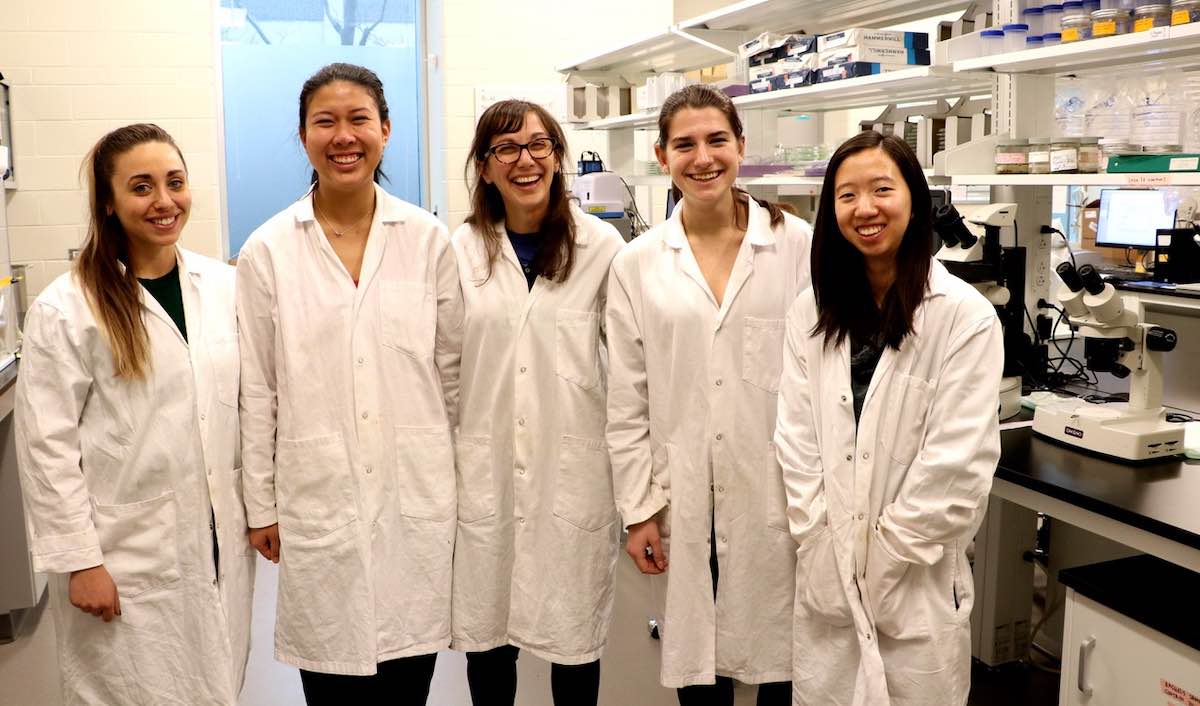The Decade of Plastic Pollution – Acknowledging Canada’s Leadership
Published by Ocean Conservancy
Today’s guest blog comes from Dr. Chelsea Rochman, Assistant Professor at University of Toronto and Scientific Advisor to Ocean Conservancy.
One decade ago, I hopped aboard a research vessel with the Scripps Institution of Oceanography and took my first trip to the North Pacific Garbage Patch. At this time, we had heard about large concentrations of plastics in the middle of the ocean, and about mammals and birds being entangled by large plastic nets and line. What we really understood about plastic pollution ten years ago was just the tip of the iceberg.


As we boarded the ship, we pictured we’d soon be arriving to a large mass of floating debris far from human civilization. We pictured fishing nets, buoys, bags and other large items that could be cleaned up. When we arrived, we saw what the garbage patches really look like. When plastic waste is littered and finds its way to our ocean or even the Great Lakes, it travels with the currents as it’s beaten down by the sun, wind and waves. The plastic that makes its final stop in the garbage patches, 1000s of km out to sea, are mostly small bits of microplastics—the size of a pencil eraser and smaller. Off the bow of the ship, on a sunny and calm afternoon, I saw bits of plastic confetti as far as my eyes could see—making up not a garbage patch you could clean up, but a soup of small plastic debris that could infiltrate every level of the marine food web.
This research expedition, ten years ago, was the beginning of my career quantifying, characterizing and increasing our understanding about the impacts of microplastics in aquatic ecosystems. Today, I no longer spend my time researching plastic pollution in the ocean garbage patches far from civilization; I work with an amazing group of students and collaborators and together we research plastic pollution in rivers, bays, estuaries and lakes—in Canada, the U.S. and abroad. We have never been to a study site where we have not found microplastics in our samples. In fact, some samples have so many pieces we have more than 15 students working on one project.


This decade, I have been incredibly inspired by the positive change I see around me and the motivation I see by governments around the world to mitigate plastic pollution. This week, I was proud to stand on the shores of Lake Ontario, where we’ve found microplastics in surface waters, sediments, local fish and in drinking water, with the Canadian Minister of the Environment Catherine McKenna and Member of Parliament Julie Dabrusin for an announcement about how Canada will continue to take leadership on the issue.
When I started working on this issue, over one decade ago, it received very little attention from fellow scientists, policy-makers and the public. Today, I am pleasantly shocked everyday by how many people are listening and willing to come together to mitigate the issue.
The announcements made this week by the Canadian Government are a very important step forward, and I’ve been very impressed by the leadership from the Canadian government at working to tackle this issue. There is no silver bullet solution to plastic pollution, and we need solutions that span clean up, reductions in waste and improved materials management. The government has committed to a holistic approach that includes these elements, including research to inform the most effective mitigation strategies.
For this reason, I was thrilled to be invited to share my story and my thoughts on the issue as Minister McKenna made the announcement in Toronto. It was a great opportunity to publicly acknowledge the work Canada has done on this issue including the online portal, the fund for international collaboration, the Ocean Plastics Charter and the support for continued and improved research.
While this is a huge step forward, all should recognize that this is only the beginning and that the work starts here. Everyone across the world has work to do to solve this global issue. As a citizen, we can refuse items that cannot be sustainably managed via reuse or recycling, reduce the waste we produce and become more waste literate. We can also share our concern with others and write letters to government asking for support.
I intend to continue to work tirelessly on this issue via research through my laboratory at the University of Toronto and through our outreach program—the UofT Trash Team. I spent my last ten years producing data that could inform policy. I am comforted knowing that over the next ten years, the government and all of you will be working right along with me using this new information to inform positive change. This truly is the decade of plastic pollution, and I hope that ten years from now we can all look back on the work we did together and boast about a measurable reduction in the amount of plastic that becomes waste and is littered on the coastlines of Canada and around the world.
Sign up for our emails!
The post The Decade of Plastic Pollution – Acknowledging Canada’s Leadership appeared first on Ocean Conservancy.
Read the full article at: https://oceanconservancy.org/blog/2019/06/17/decade-plastic-pollution-acknowledging-canadas-leadership/



